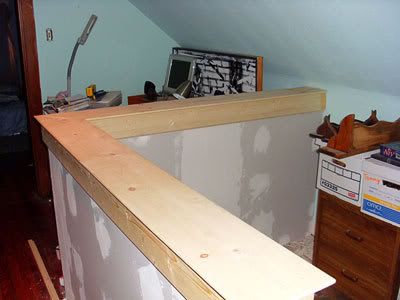Ya know I quickly read this yesterday and was prepared to give an explanation about expansion/contraction along lengths/widths much like the others have done; but, yes, thought I mis-understood the question as well.
In my mind this is a what a half wall cap looks like:

Borrowed, interestly enough, from
The Bench Dog one man's thoughts and adventures as a beginning woodworker.
Last post was last year; hope he didn't give it up.

Anyway, after re-reading Ole's post I think the problem lies in the 30' long sections. You are concerned that this section will be created in 5+ six foot long lengths that are scarf-jointed together. Your concern lies in how this joint will withstand the shrinking/expansion
across its width, correct?
I would expect the cap to expand and contract at the same consistency across all the sections; they are made from the same species in the same orientation, yes? I can't say that you couldn't run your finger along the edge and
feel a slight bump, but it'll likely go unnoticed.
I'm sure others with better carpentry skills can elaborate more effectively.



